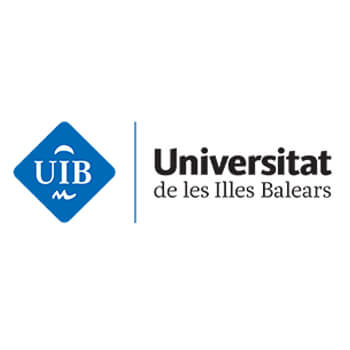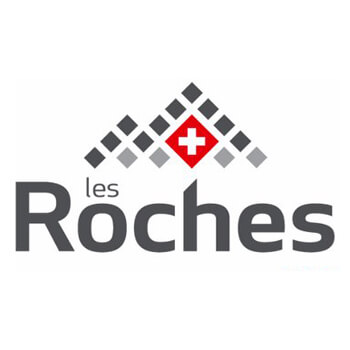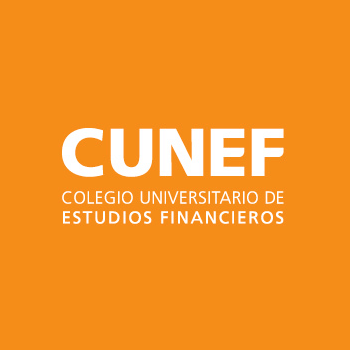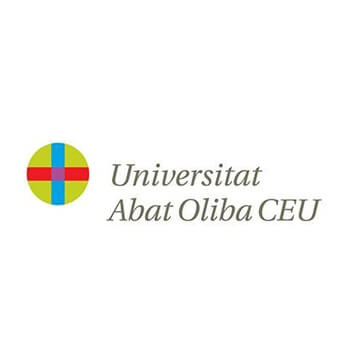Universidade de Santiago de Compostela

Founded: 1495
Address: Praza do Obradoiro, s/n - A Coruna, Spain
Phone: +34 881 811000
Address: Praza do Obradoiro, s/n - A Coruna, Spain
Phone: +34 881 811000
Here you find out Universidade de Santiago de Compostela complete information about fees, location, degree Universidade de Santiago de Compostela offers, number, website, and much more. Universidade de Santiago de Compostela is a leading university in A Coruna - Spain.
You can also find out jobs at Universidade de Santiago de Compostela for students, teachers, and professors. We also update the database for an internship at Universidade de Santiago de Compostela for students.
With more than five centuries of tradition, the University of Santiago de Compostela is a historic institution that projects itself to the future and beyond its frontiers, always attentive to the different demands of society, where it stands as an important academic frame of reference and where it develops its academic and research work. Centuries of history give the University an special capac...ity to merge the experience, security and confidence with present and future challenges.
The roots of the University go back to 1495, when the Santiago de Compostela solicitor López Gómez de Marzoa founds, with the help of the San Martiño Piñeiro abbot, a school for the poor known as "Grammatic Academy" in the monastery of San Paio de Antealtares. From then on, a period of uncertainties is opened due to the lack of economic resources. But in the year 1504, the Diego de Muros family arrives to this academic institution. Diego de Muros gets a bull issued by the Pope Julius II that allows for the realisation of higher learning in the "Gramatic Academy".
The definitive consolidation of the University comes with Alonso III de Fonseca, named archbishop of Santiago de Compostela in 1507. Alonso de Fonseca was an extremely erudite man, a Renaissance man, patron of numerous artists of the time, who was in touch with important thinkers such as Erasmus de Rotterdam. This is when the old Pilgrim"s Hospital was bought with the aim of transforming it into a university college. The Santiago Alfeo College, today known as the Fonseca College, was also built, which became the epicentre of the university life till the second half of the XVIII century and still remains emblematic in today"s university. At the end of the XVI and beginning of the XVII centuries the San Patricio College, or College of the Irish, was created and the San Xerome College was moved to its current location.
Contrary to what happens nowadays, these colleges agglutinated all the seats of learning in the same building, where students lived as boarders. Then, three were the main disciplines: Theology, Grammar and Arts, which were soon completed with the study of Law (paying special attention to ecclesiastical law) and Medicine, more preoccupied about the health of the soul than about the care of the body.
The XVIII century witnessed a profound transformation in the University of Santiago. Not only was it the era when the University escaped completely from the control of the religious orders of the Catholic Church, but it was also a time when the University lost part of its autonomy to the centralising forces of the Spanish Monarchy. It was during this period that Charles III granted the title of "Regia" to the University. The University seal is enriched with the Royal Crown over the coat of arms of Castilla, León and Galicia, as well as the most important founders" emblems.
After expelling the Jesuits, Charles III concedes their terrains and buildings in Santiago to the university, thus establishing the core of the new erudite university. Immediately, the University recuperates to its plan of studies disciplines that have been previously given to certain religious congregations, including academic degrees and schools for Experimental Physics or Chemistry.
The beginning of the XX century produced a new generation of intellectuals closely tied to the university who would make up the core of a revival in the cultural life of Galicia. At the same time, there was a wide acceptance and support to the modern currents of thought. This introduced key figures from different scientific fields in our institutions. This is when the USC experiences a significant growth in the number of students as well as in carreers, which also meant a significant growth in infrastructures. Thus, it continued to develop with new buildings, the enlargement of the University Building, the Faculty of Geography and History, and further on accommodation buildings, the College of Veterinary (Galician Parliament), the College of Deaf and Dumbs (Seat of the Xunta de Galicia) and the Faculty and Medicine. Another great project was the establishment of the Hall of Residence in 1930. Definitevely, it is a period of great quantitive and quality changes with an important increase in infrastructures along with the regionalisation of studies in search for a best adaptation to the Galician reality.
Another characteristic of the XX century was the establishment of agreements with foreign intitutions of university education, at first with Portuguese universities. From then on, academic halls were established for women, who became members of the university in the 1913-1914 academic year. Moreover, the amount of books of the institution has been increased with new endowments, such as that of the American Library.
The militar rising against the Republic and the outbreak of the Civil War meant a period of change in the University of Santiago. The military coups dominated the city council,imposing on the University a new rector and new norms such as praying before and after each lesson. Precisely, the Santiago de Compostela anti-Franco oposition came from intellectuals and students of the university and not from the working-class movements, as happened in Coruña, Vigo or Ferrol.
In the last decades, the universities of Coruña and Vigo already segregated, the USc student population numbers over 45.000. Nowadays, the University is organized into two Campuses, Santiago and Lugo, which include 30 centres, nearly 80 departments and more than 60 degrees, apart from numerous installations such as research institutes, halls of residence, sports and cultural facilities, libraries, etc. Definitively, with the security and confidence of 500 years of experience, the University of Santiago de Compostela looks towards the future without forgetting its past, promoting new initiatives and putting its knowledge and leadership in the service of the demands of our society.
You can also find out jobs at Universidade de Santiago de Compostela for students, teachers, and professors. We also update the database for an internship at Universidade de Santiago de Compostela for students.
With more than five centuries of tradition, the University of Santiago de Compostela is a historic institution that projects itself to the future and beyond its frontiers, always attentive to the different demands of society, where it stands as an important academic frame of reference and where it develops its academic and research work. Centuries of history give the University an special capac...ity to merge the experience, security and confidence with present and future challenges.
The roots of the University go back to 1495, when the Santiago de Compostela solicitor López Gómez de Marzoa founds, with the help of the San Martiño Piñeiro abbot, a school for the poor known as "Grammatic Academy" in the monastery of San Paio de Antealtares. From then on, a period of uncertainties is opened due to the lack of economic resources. But in the year 1504, the Diego de Muros family arrives to this academic institution. Diego de Muros gets a bull issued by the Pope Julius II that allows for the realisation of higher learning in the "Gramatic Academy".
The definitive consolidation of the University comes with Alonso III de Fonseca, named archbishop of Santiago de Compostela in 1507. Alonso de Fonseca was an extremely erudite man, a Renaissance man, patron of numerous artists of the time, who was in touch with important thinkers such as Erasmus de Rotterdam. This is when the old Pilgrim"s Hospital was bought with the aim of transforming it into a university college. The Santiago Alfeo College, today known as the Fonseca College, was also built, which became the epicentre of the university life till the second half of the XVIII century and still remains emblematic in today"s university. At the end of the XVI and beginning of the XVII centuries the San Patricio College, or College of the Irish, was created and the San Xerome College was moved to its current location.
Contrary to what happens nowadays, these colleges agglutinated all the seats of learning in the same building, where students lived as boarders. Then, three were the main disciplines: Theology, Grammar and Arts, which were soon completed with the study of Law (paying special attention to ecclesiastical law) and Medicine, more preoccupied about the health of the soul than about the care of the body.
The XVIII century witnessed a profound transformation in the University of Santiago. Not only was it the era when the University escaped completely from the control of the religious orders of the Catholic Church, but it was also a time when the University lost part of its autonomy to the centralising forces of the Spanish Monarchy. It was during this period that Charles III granted the title of "Regia" to the University. The University seal is enriched with the Royal Crown over the coat of arms of Castilla, León and Galicia, as well as the most important founders" emblems.
After expelling the Jesuits, Charles III concedes their terrains and buildings in Santiago to the university, thus establishing the core of the new erudite university. Immediately, the University recuperates to its plan of studies disciplines that have been previously given to certain religious congregations, including academic degrees and schools for Experimental Physics or Chemistry.
The beginning of the XX century produced a new generation of intellectuals closely tied to the university who would make up the core of a revival in the cultural life of Galicia. At the same time, there was a wide acceptance and support to the modern currents of thought. This introduced key figures from different scientific fields in our institutions. This is when the USC experiences a significant growth in the number of students as well as in carreers, which also meant a significant growth in infrastructures. Thus, it continued to develop with new buildings, the enlargement of the University Building, the Faculty of Geography and History, and further on accommodation buildings, the College of Veterinary (Galician Parliament), the College of Deaf and Dumbs (Seat of the Xunta de Galicia) and the Faculty and Medicine. Another great project was the establishment of the Hall of Residence in 1930. Definitevely, it is a period of great quantitive and quality changes with an important increase in infrastructures along with the regionalisation of studies in search for a best adaptation to the Galician reality.
Another characteristic of the XX century was the establishment of agreements with foreign intitutions of university education, at first with Portuguese universities. From then on, academic halls were established for women, who became members of the university in the 1913-1914 academic year. Moreover, the amount of books of the institution has been increased with new endowments, such as that of the American Library.
The militar rising against the Republic and the outbreak of the Civil War meant a period of change in the University of Santiago. The military coups dominated the city council,imposing on the University a new rector and new norms such as praying before and after each lesson. Precisely, the Santiago de Compostela anti-Franco oposition came from intellectuals and students of the university and not from the working-class movements, as happened in Coruña, Vigo or Ferrol.
In the last decades, the universities of Coruña and Vigo already segregated, the USc student population numbers over 45.000. Nowadays, the University is organized into two Campuses, Santiago and Lugo, which include 30 centres, nearly 80 departments and more than 60 degrees, apart from numerous installations such as research institutes, halls of residence, sports and cultural facilities, libraries, etc. Definitively, with the security and confidence of 500 years of experience, the University of Santiago de Compostela looks towards the future without forgetting its past, promoting new initiatives and putting its knowledge and leadership in the service of the demands of our society.
Read More
Details:
LeaderShip: Rector: Prof. Dr. Juan Viaño Rey
Fees:
Time:
Phone Number: +34 881 811000
City: A Coruna
Fees:
Time:
Phone Number: +34 881 811000
City: A Coruna
Timing:
Country: Spain
Staff:
Website: http://www.usc.es
Country: Spain
Staff:
Website: http://www.usc.es
Subjects:
Jobs in Universidade de Santiago de Compostela
Currently, there is no job opening in Universidade de Santiago de Compostela as per our database.



















Leave a Reply